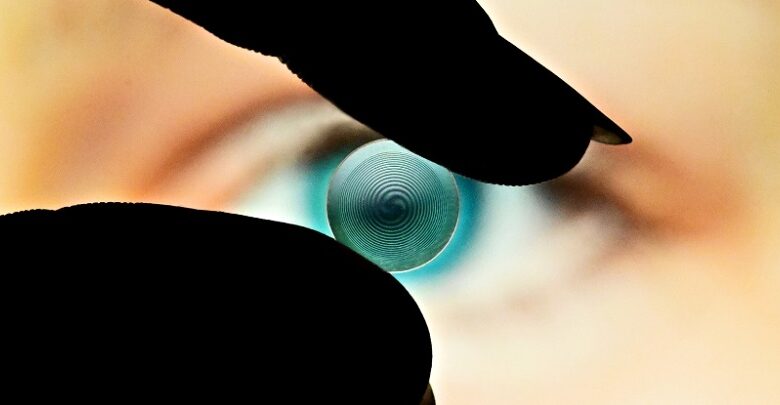
Researchers have developed a new spiral-shaped lens that has distinct advantages over lenses currently in production and could revolutionize ophthalmology and other lens technologies going forward.
The new lens not only maintains clear focus at different distances, but also does so in varying light conditions, thereby overcoming many of the challenges associated with lenses currently used in prescription glasses, contact lenses, and in intraocular implants for cataracts, as well as in many miniature imaging systems.
The joint research team, from the Institut d’Optique Graduate School, the University of Bordeaux, and the National Centre for Scientific Research (CNRS) in France, that developed the new glasses say that unlike existing multifocal lenses, the new lens works much like progressive lenses used for vision correction, but without the distortions typically seen with those lenses, especially around the wearer’s peripheral vision.
The ability to provide consistently clear vision could potentially make the lens a boon for people with age-related farsightedness or for those with implanted lenses.
Explaining the advantages of their new lens, which they called a spiral diopter, the research team said that the spiraling features of the lens are arranged in a way that creates many separate points of focus — much like having multiple lenses in one.
This makes it possible to see clearly at various distances.
In addition to ophthalmology applications, the simple design of this lens could streamline the design and function of compact imaging systems, and offer a way to accomplish imaging at various depths without additional optical elements. These capabilities, coupled with the lens’s multifocal properties, offer a powerful tool for depth perception in advanced imaging applications.
The unique spiral design of the lens causes light to spin, like water going down a drain. This phenomenon, known as an optical vortex, creates multiple clear focus points, which allow the lens to provide clear focus at different distances. Creating an optical vortex usually requires multiple optical components, however the researchers were able to incorporate the elements necessary to make an optical vortex directly into its surface.
The scientists also discovered that the optical vortices could be modified by adjusting the topological charge, which is essentially the number of windings around the optical axis.Volunteers using the lenses also reported noticeable improvements in visual acuity at a variety of distances and lighting conditions.
The technique, which uses advanced digital machining to mold the unique spiral design with high precision, has the potential to make significant advancement in the field of optics. Bringing the new lens to fruition required combining the intuitively crafted design with advanced fabrication techniques through a cross-disciplinary collaboration among optical scientists.
The research team is now reportedly working to better understand the unique optical vortices produced by their lens. They also plan to perform systematic trials of the ability of their lens to correct vision in people, so as to comprehensively establish its performance and advantages in real-world conditions. In addition, they are exploring the possibility of applying the concept to prescription eyeglasses, which could potentially offer users clear vision across multiple distances.
While the researchers are still some way off from being able to mass-produce spiral diopter contact lenses, they have run simulations and laser tests showing the lens working as intended. Future developments with this technology might also lead to advancements in compact imaging technologies, wearable devices and remote sensing systems for drones or self-driving cars, which could make them more reliable and efficient, said a research team member.












